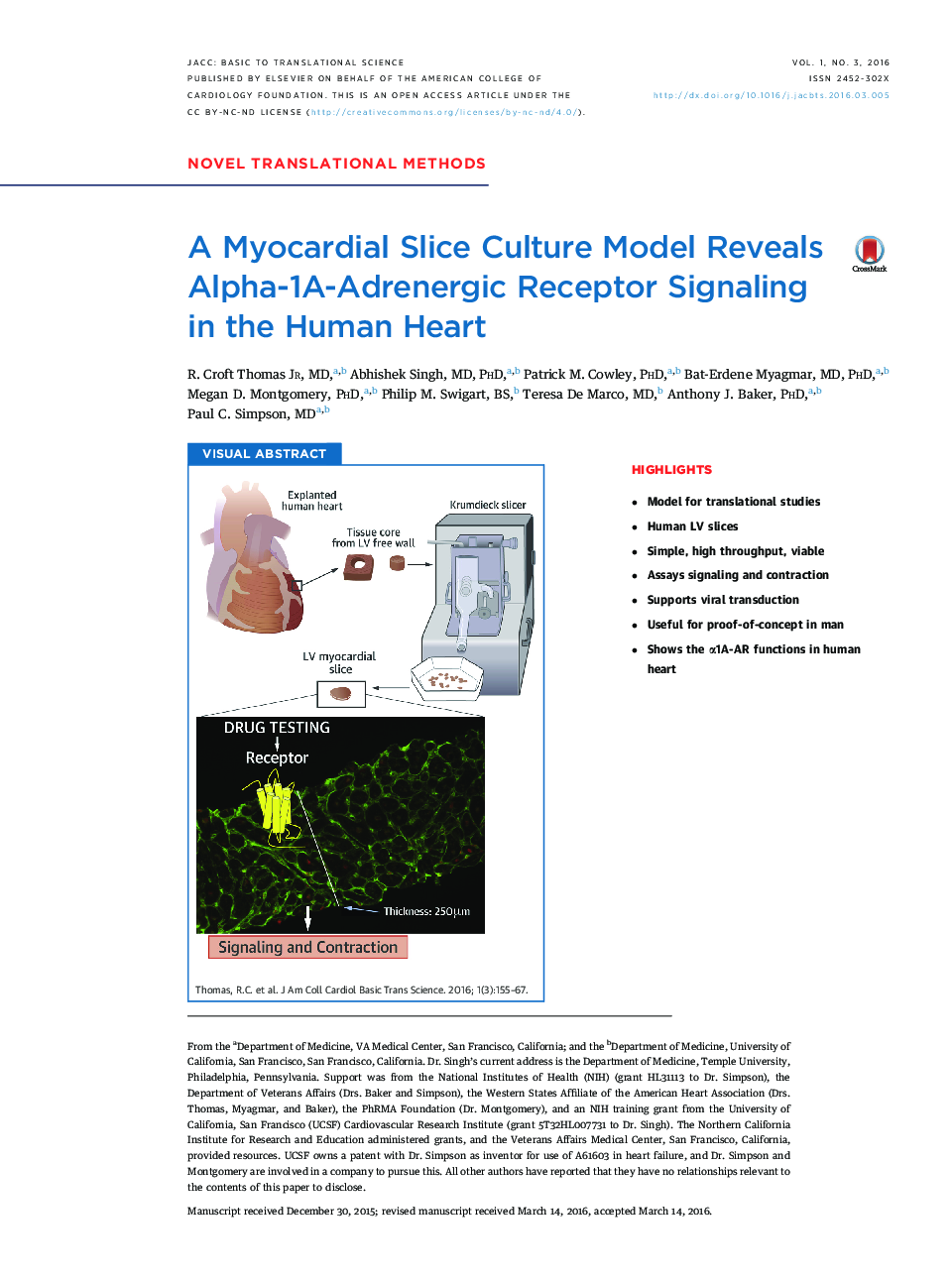| Article ID | Journal | Published Year | Pages | File Type |
|---|---|---|---|---|
| 2937553 | JACC: Basic to Translational Science | 2016 | 13 Pages |
•Model for translational studies•Human LV slices•Simple, high throughput, viable•Assays signaling and contraction•Supports viral transduction•Useful for proof-of-concept in man•Shows the α1A-AR functions in human heart
SummaryThe authors used 52 nonfailing and failing human hearts to develop a simple, high throughput left ventricular myocardial slice model that is stable by ATP and viability assays for at least 3 days. The model supports studies of signaling, contraction, and viral transduction. They use the model to show for the first time that the alpha-1A-adrenergic receptor, which is present at very low abundance in the human myocardium, activates cardioprotective ERK with nanomolar EC50 in failing heart slices and stimulates a positive inotropic effect. This model should be useful for translational studies, to test whether molecules discovered in basic experiments are functional in the human heart.
Visual AbstractFigure optionsDownload full-size imageDownload high-quality image (159 K)Download as PowerPoint slide
